Could we really learn to drive a Formula 1 car in a day?
We went away to bootcamp with Renault Sport F1. Could I really learn to drive one of its cars in a few hours?

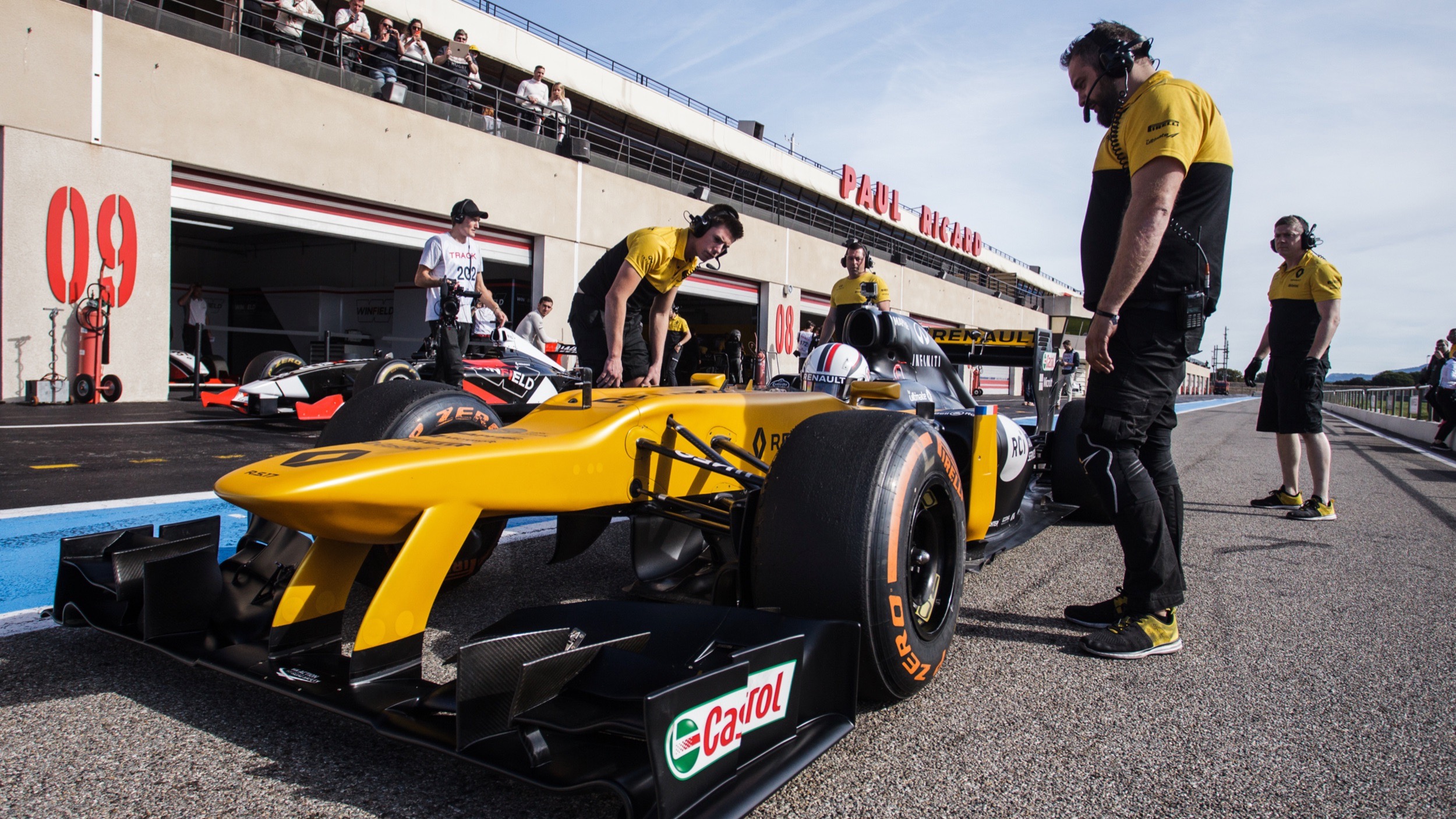
When Renault Sport invited me to come to France and drive an Formula 1 car, I couldn’t quite believe it. Did they really mean I’d be able to drive a genuine race-worn F1 car? Did they really mean ‘on my own’? As it turned out, yes I could and yes they did.
However, that raised other questions in my mind – would I be able to handle it? Would I be able to learn the complex clutch and – quite frankly – wouldn’t there be far better qualified people to do it than me?
I was still thinking this as the 7am minibus rolled up to my hotel at Le Castellet, around 40km from Marseille in the south of France. It was a bleary-eyed start, but I was dropped off at a building which would be our base at the beginning and end of the day. There I changed into my overalls along with around 10 other willing participants.
- F1 2018: Sky suggests the ultimate TV setup
- T3 Drives: Is the future of SUVs hybrid? We drive the Lexus RX to find out
We started off the day at the Winfield Racing School who Renault uses for its Renault Sport F1 experiences. The school is based at the Paul Ricard circuit. Opened in 1970, the track was used for Grands Prix until 1990.
Next year it will return to the F1 calendar for the first time since 1990. We were to drive a shortened version of the main circuit, 3.8km instead of 5.8km, including two straights and a twisty, difficult final section.
Winfield has a long F1 legacy, with Alain Prost and Damon Hill among the roster of F1 names that have graduated from its ranks.

First up for us was a drivers’ briefing to learn about a few things we needed to be aware of regarding safety and by 8am we were in a minibus going around the circuit for the first time and learning the layout. After that we were in the main pit building and the rooms above which will be some of the facilities used for the French Grand Prix next year.
Get all the latest news, reviews, deals and buying guides on gorgeous tech, home and active products from the T3 experts
While I only knew a handful of other people on the trip, there was a great atmosphere at the track as many of the other drivers were competition winners who were – very understandably – elated to be there (I was quite excited as well, in case you hadn’t guessed).
We’d be driving Formula Renault 2.0 cars in the morning - amongst various other activities to get us prepared - followed by several laps in the Formula 1 car after lunch – providing we made the grade. It was put to us in no uncertain terms that if the instructors didn't think us capable then we would not be driving the F1 car.
Gallery: Driving the Formula Renault 2.0 car

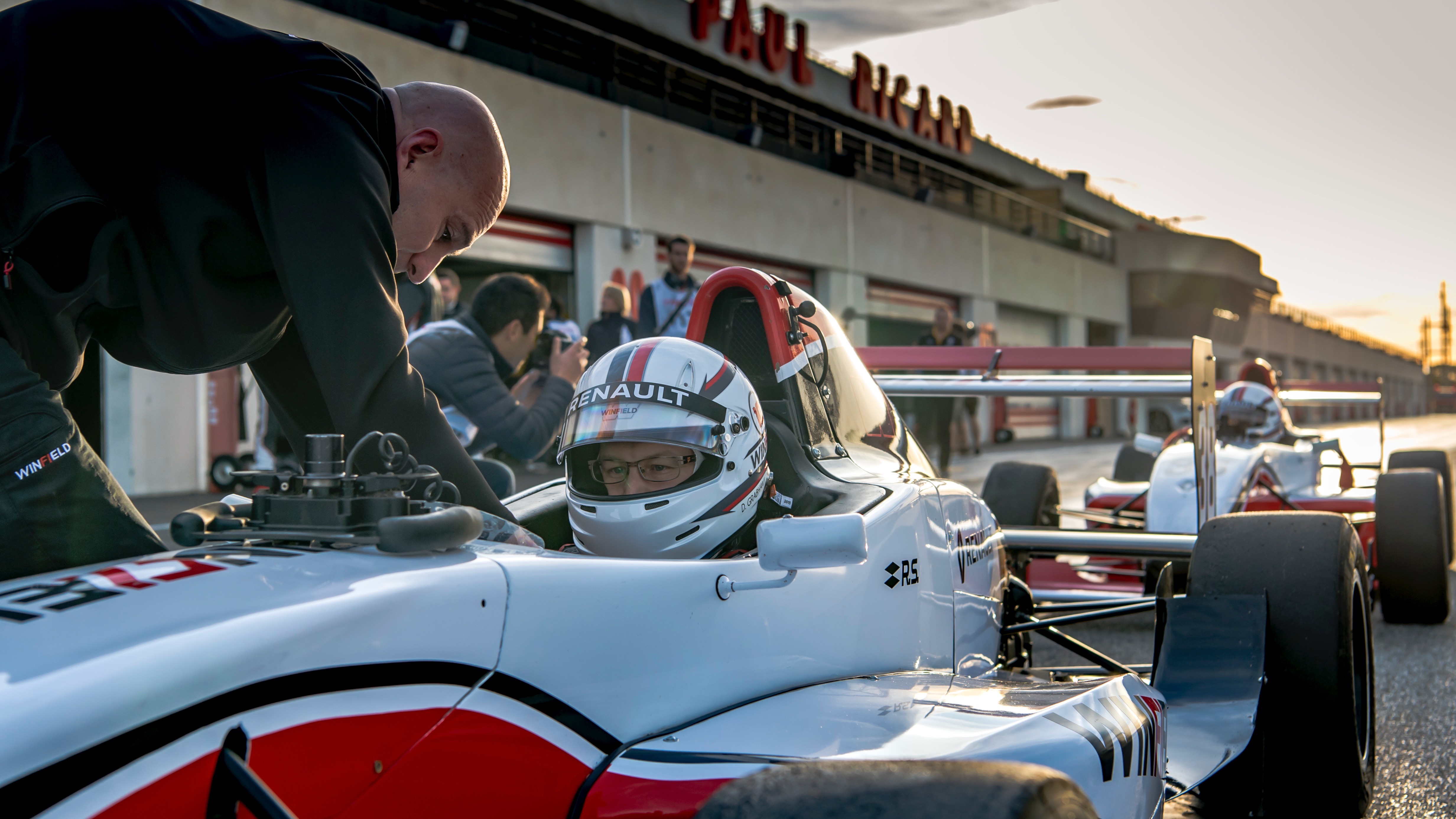
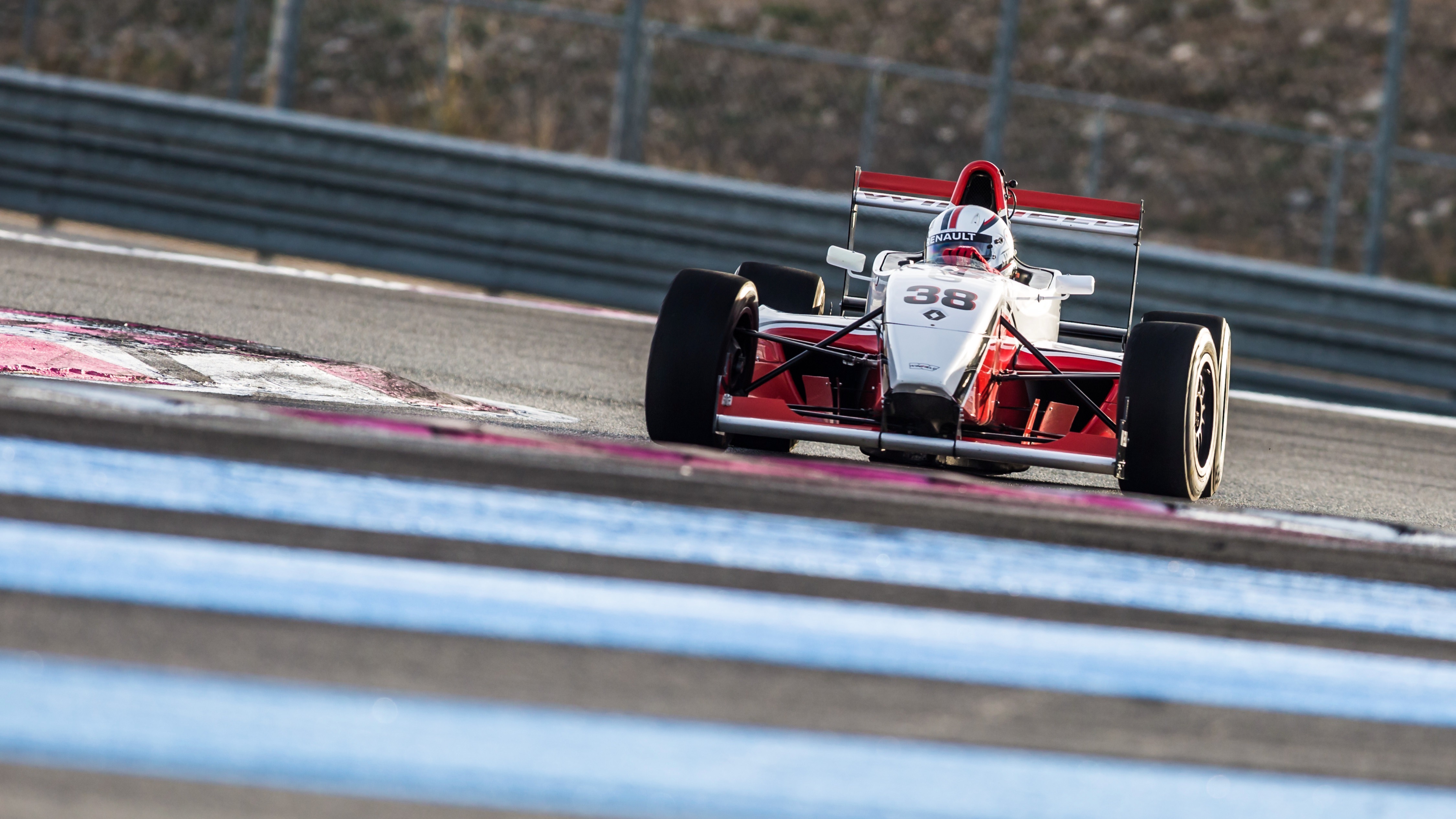


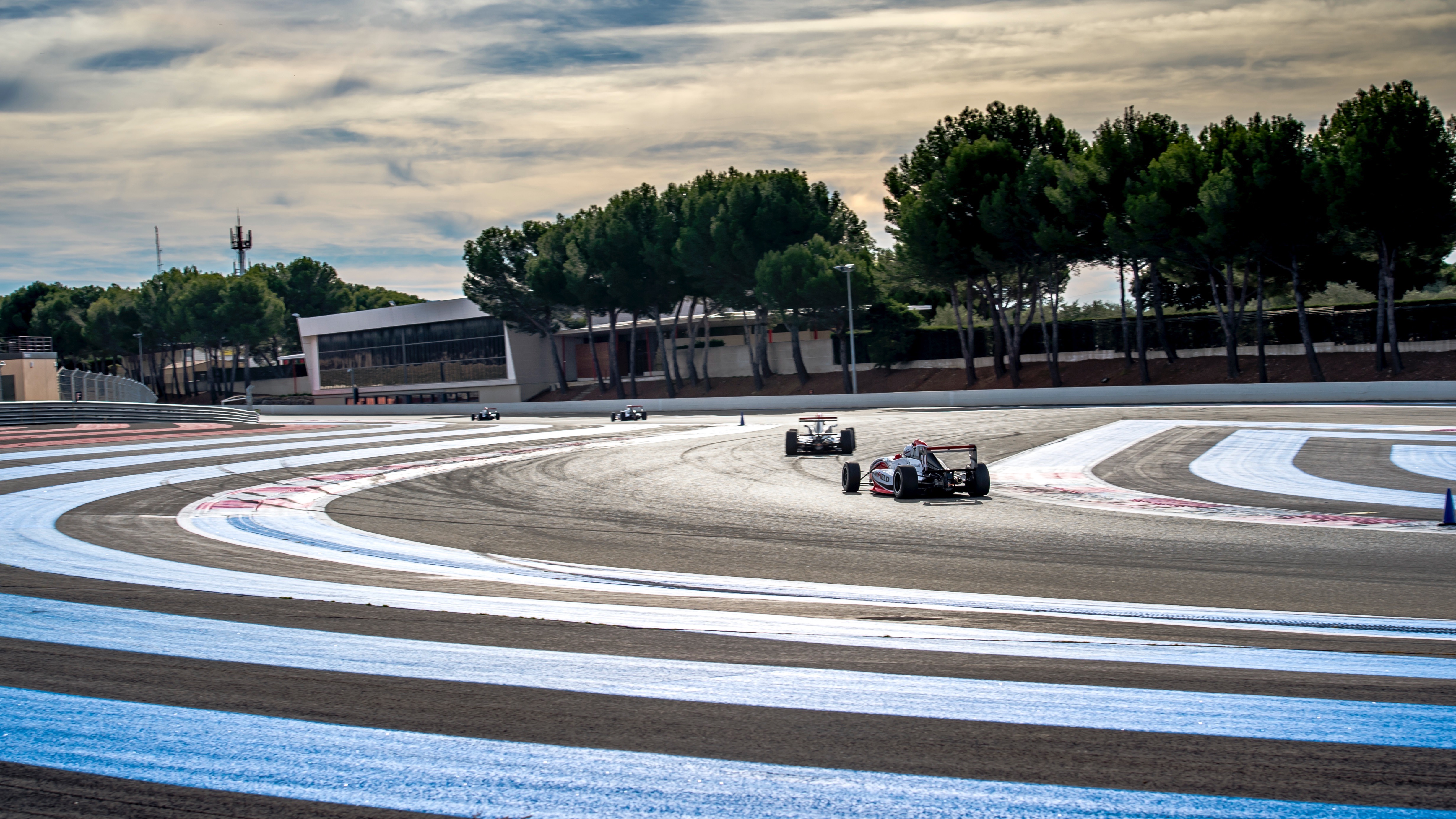
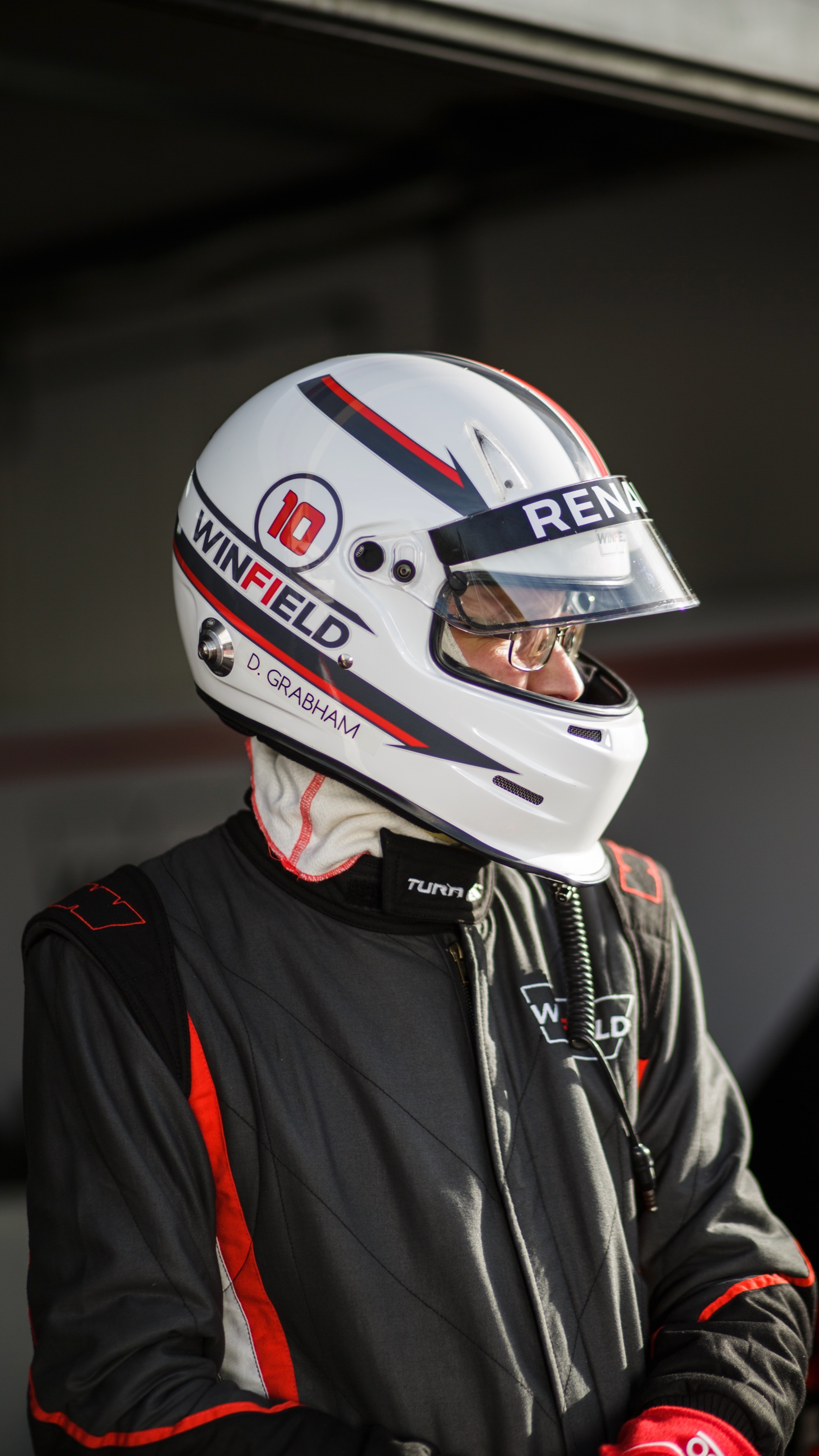
Before we went out in the cars we were loosened up with some gentle exercises followed by a briefing on the FR 2.0 cars. We were then sent off in the car in groups of three or four with a pace car in front.
The pace car got gradually faster and, while it was manageable, it was quite a challenge to get used to the car at first.
I had driven a similar car before, but it had been a while and I found this one difficult to control, especially as I was a complete novice on this track and the twisty section towards the end contained a tricky double apex.
After a while though, I felt my confidence and speed needed. After another briefing and a Batak fitness/agility training session to test my reaction time I was sent out again in the FR 2.0 car.
Finally, there was an exercise to help us visualise the track. We had to ‘think’ our way around the track and compare the resulting time to our actual time in the car.
Then the telemetry from our morning driving was analysed and our group sat in a room together for the ritual humiliation. This was more than a little disconcerting because we were told that we weren’t accelerating hard enough and therefore not having to break hard enough either. More speed needed!
Then the instructor sent us through for our F1 seat fitting – at last I was about to sit in the car!
The seating position is so low it feels unnatural – you are almost lying down and it is extremely weird hardly being able to see over the top of the ‘dash’.
I had to have some padding put in place to prop me up slightly and I had to be positioned so I was able to reach the two pedals, obviously. The brake pedal in the F1 car is so stiff that it feels like it’s not a pedal at all; it's almost like one of those fairground strength tests that involves hitting a metal plate with a hammer, only for it to register little impact. You really need to stamp on the pedal to get it to work.
As I found out later, the brakes are tremendously effective once you do stamp on the pedal, but when real F1 drivers are going at full pelt they have to apply a significant amount of pressure to the pedal to slow the machine down.
Gallery: Looking at telemetry and getting fitted for the F1 car

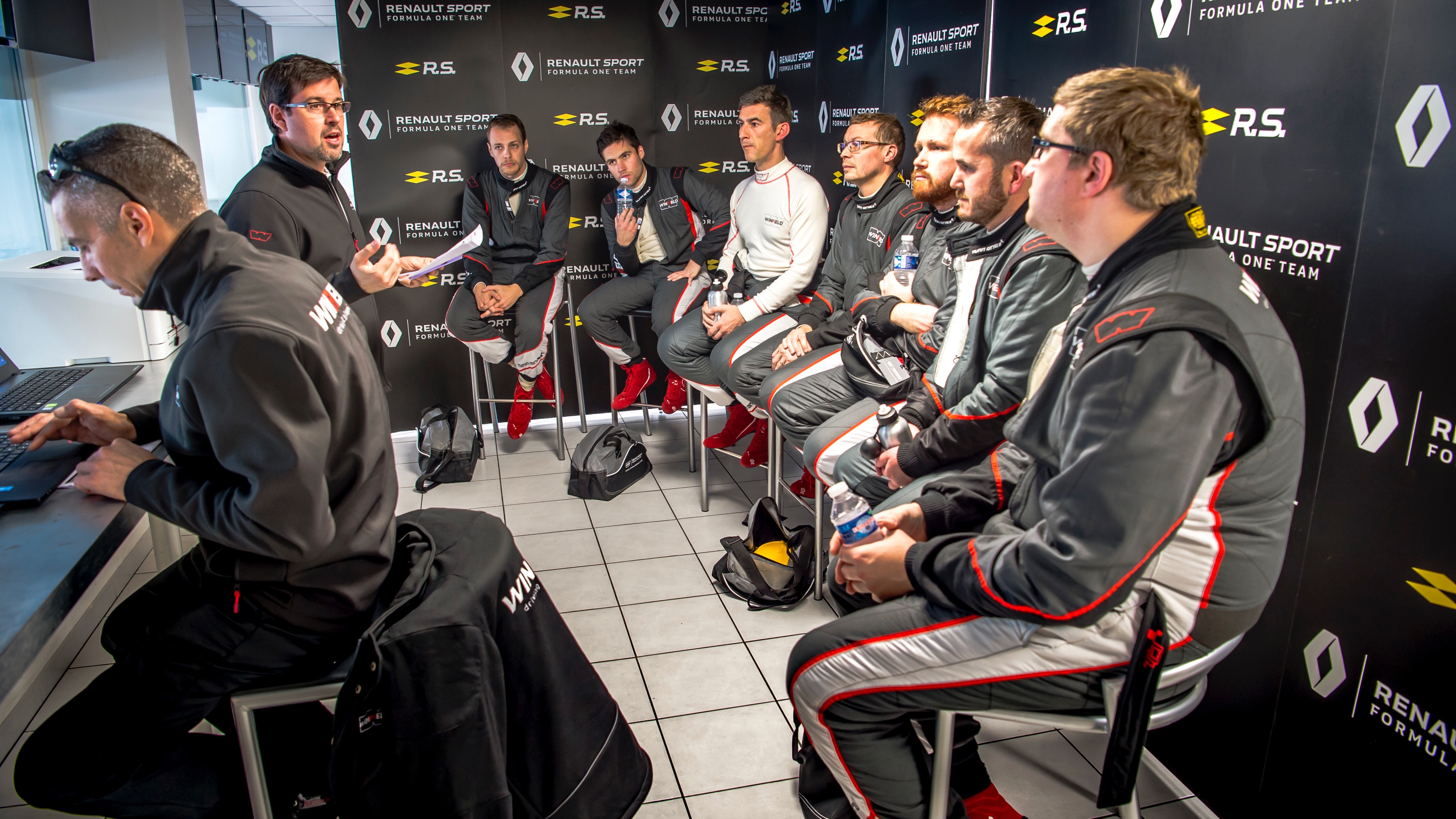
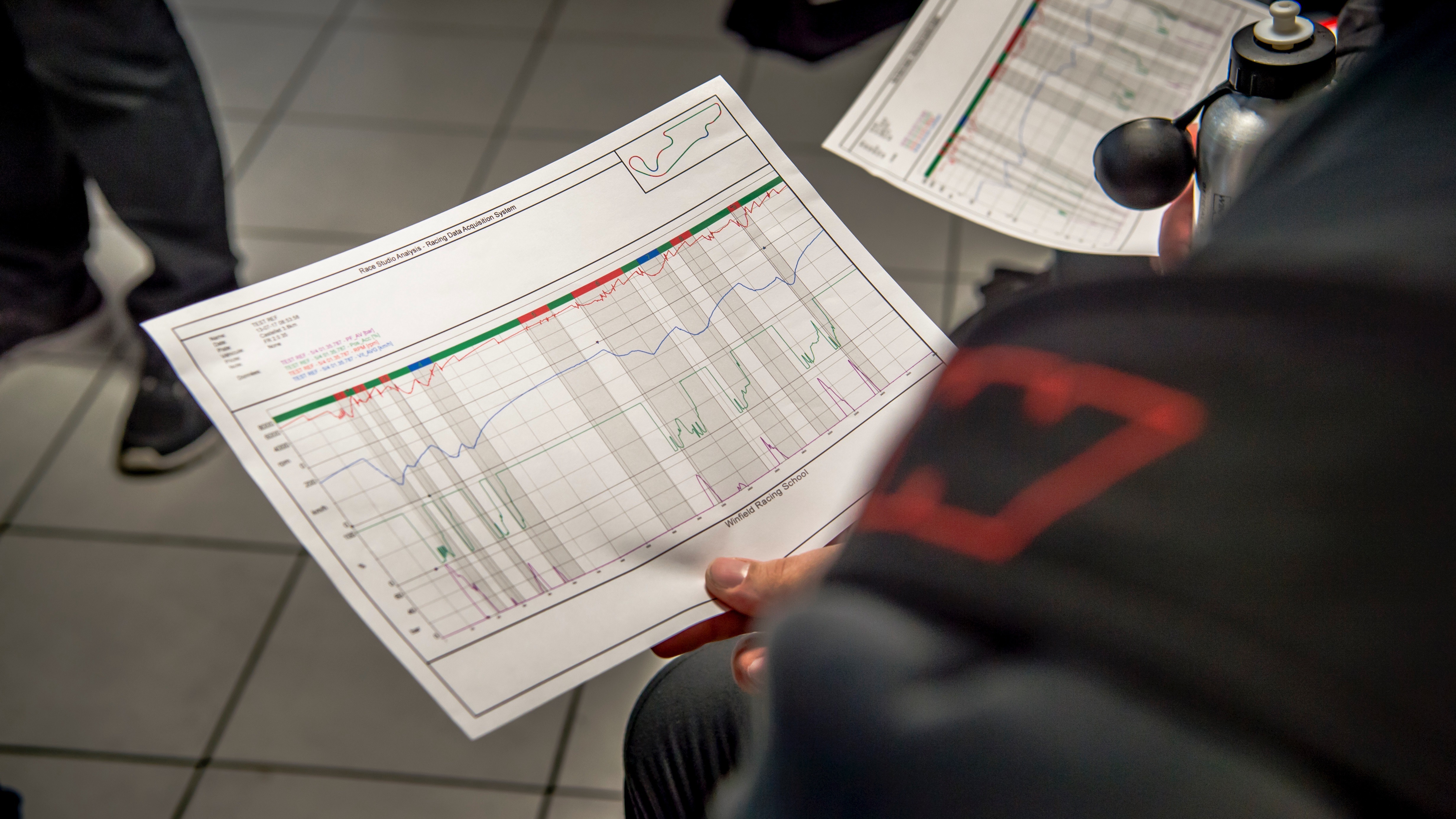
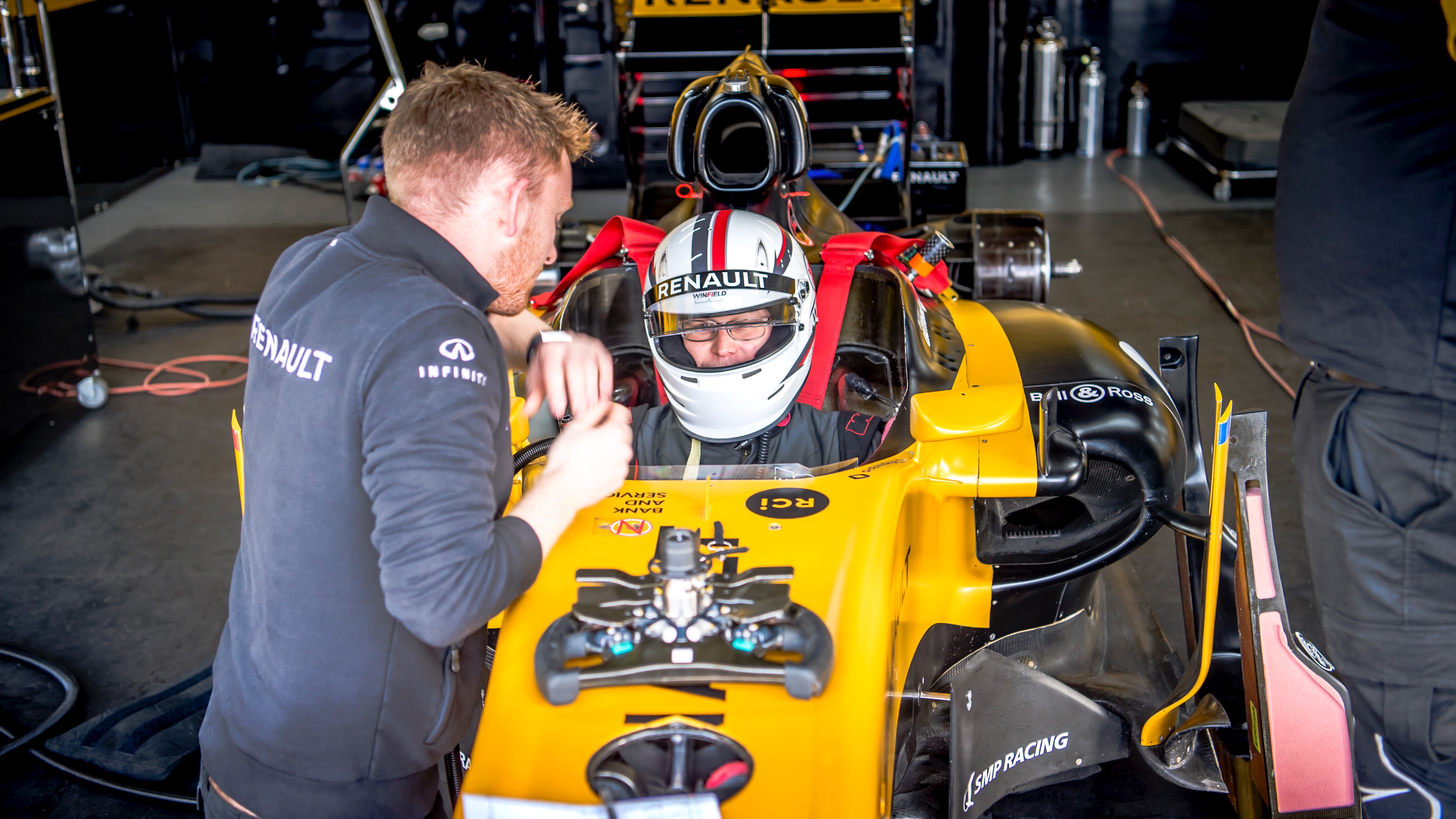


The final part of the seat fitting was a test to ensure that I could bring my knees up to get out of the cockpit in case of emergency (once the steering wheel had been taken out). If you can’t move your knees out from under the edge of the driver cocoon then you're not permitted to drive. It’s because they need to know they can extract you if you have a serious accident and your spine cannot be moved.
The F1 cars used are V8s from the 2012 FIA Formula One World Championship and are now Renault Sport F1 demonstration cars. They are speed limited – not that we hit it – and the cars were originally raced under the Lotus name by Kimi Räikkönen and Romain Grosjean. I drove Grosjean’s old car, here on the right of the garage.
After lunch at around 1pm we were into the F1 briefing. This bit made driving the car sound rather daunting, not least because of the clutch. The clutch on an F1 car is a paddle on the back of the steering wheel (there’s actually two clutch paddles on modern F1 cars for a more precise start).
We were told to let the clutch out S-L-O-W-L-Y when instructed to do so by the race engineer, who would also be able to talk in our ear. Unlike real F1 though, we wouldn’t be able to talk back to him while going at 200mph.
The main question in my head at this point was about gearing – we hadn’t actually been told what gears you should take each corner in and while it was impossible to remember exactly which gear we were in at what time, I was glad when the instructor moved onto that topic and suggested gears that you should take some of the corners in.
Gallery: Getting ready to drive the F1 car
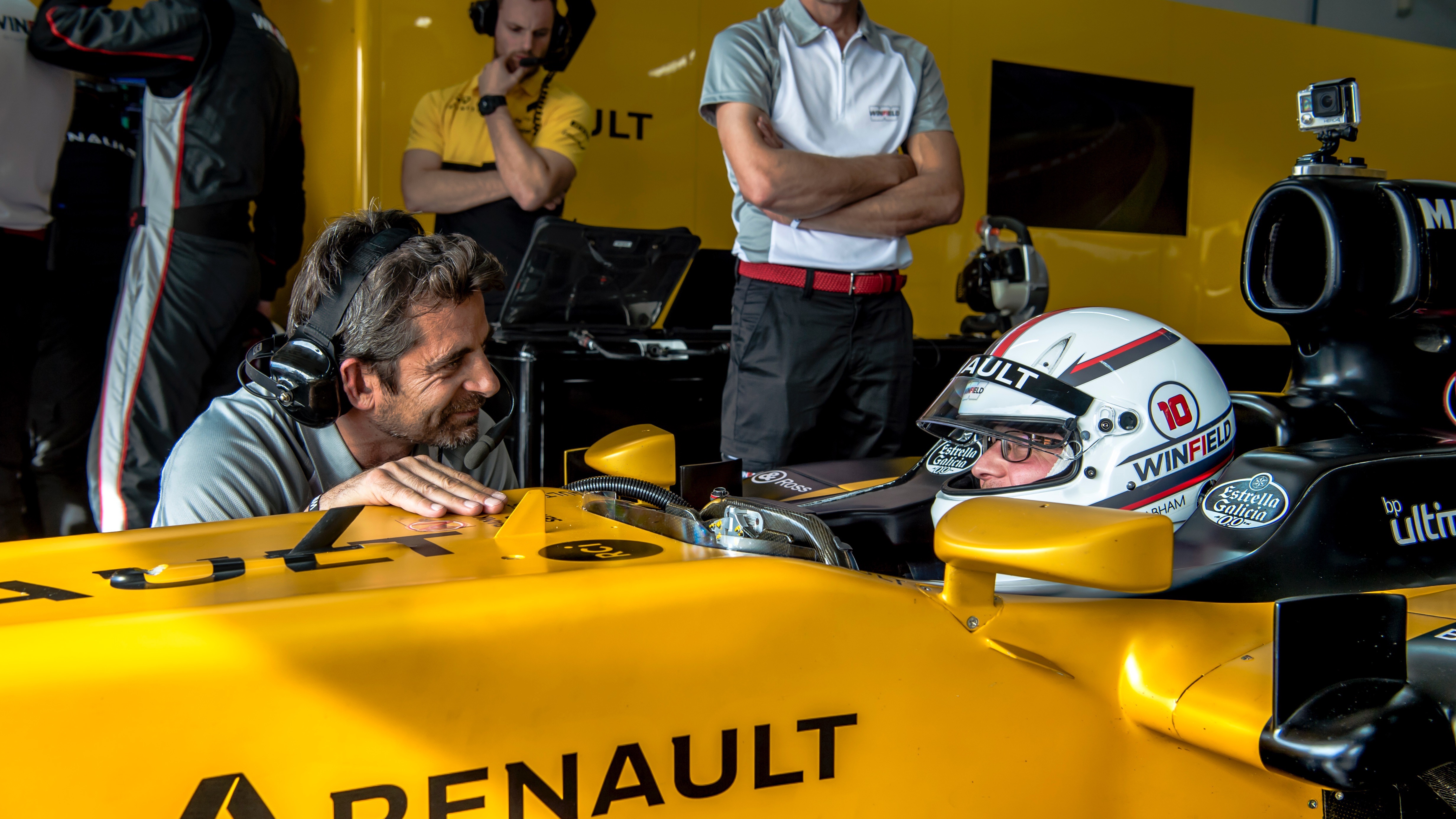
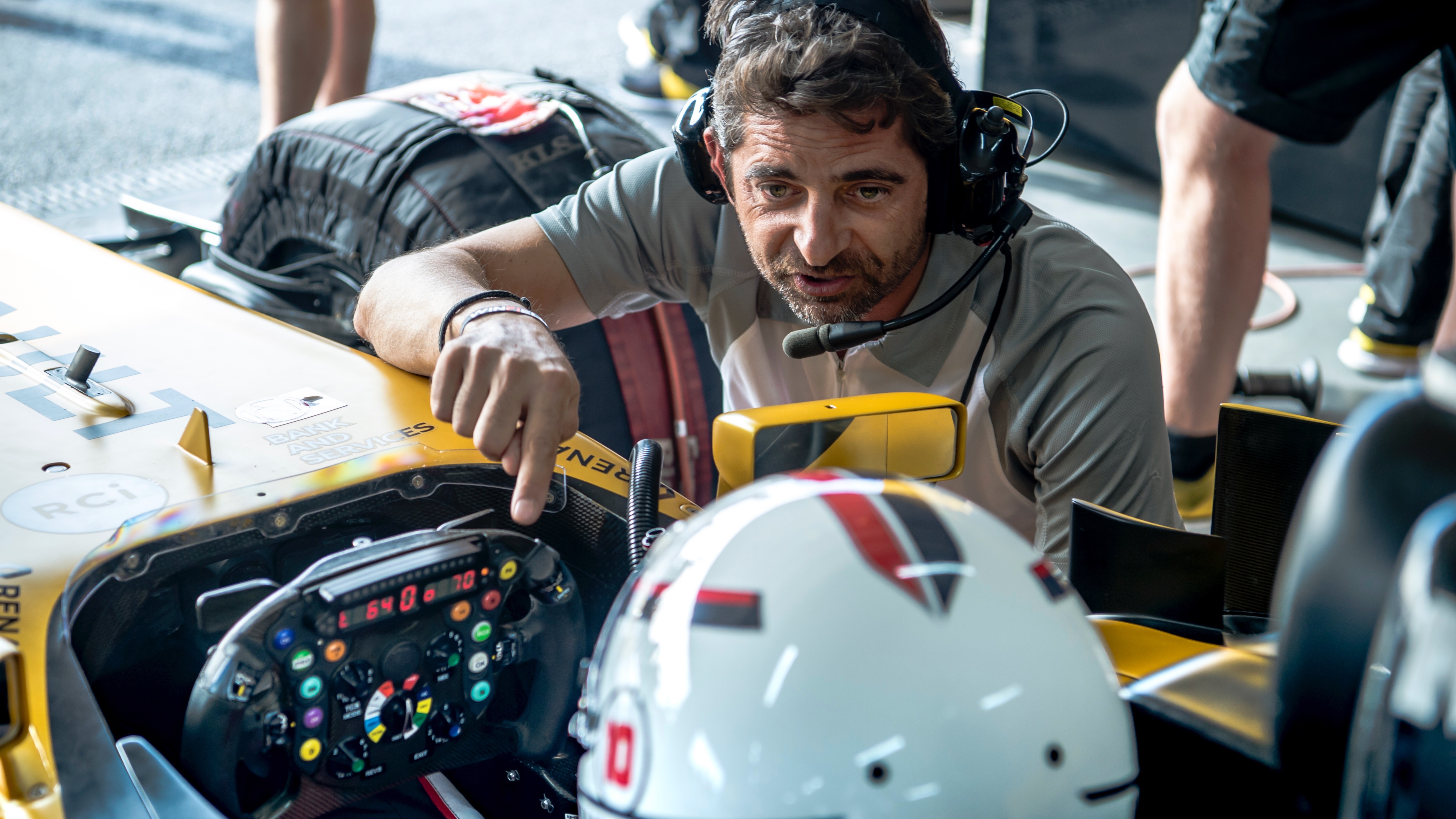
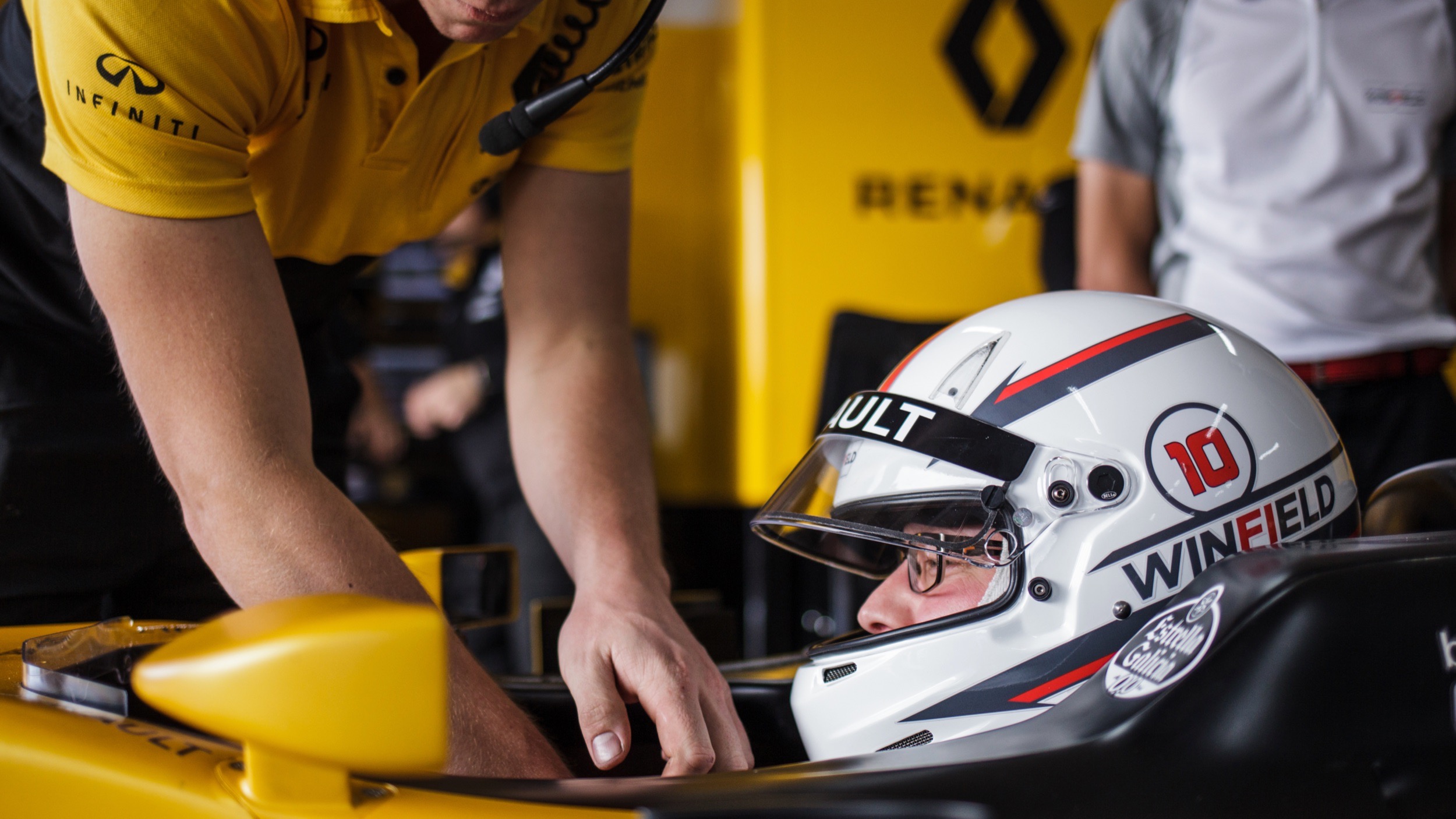
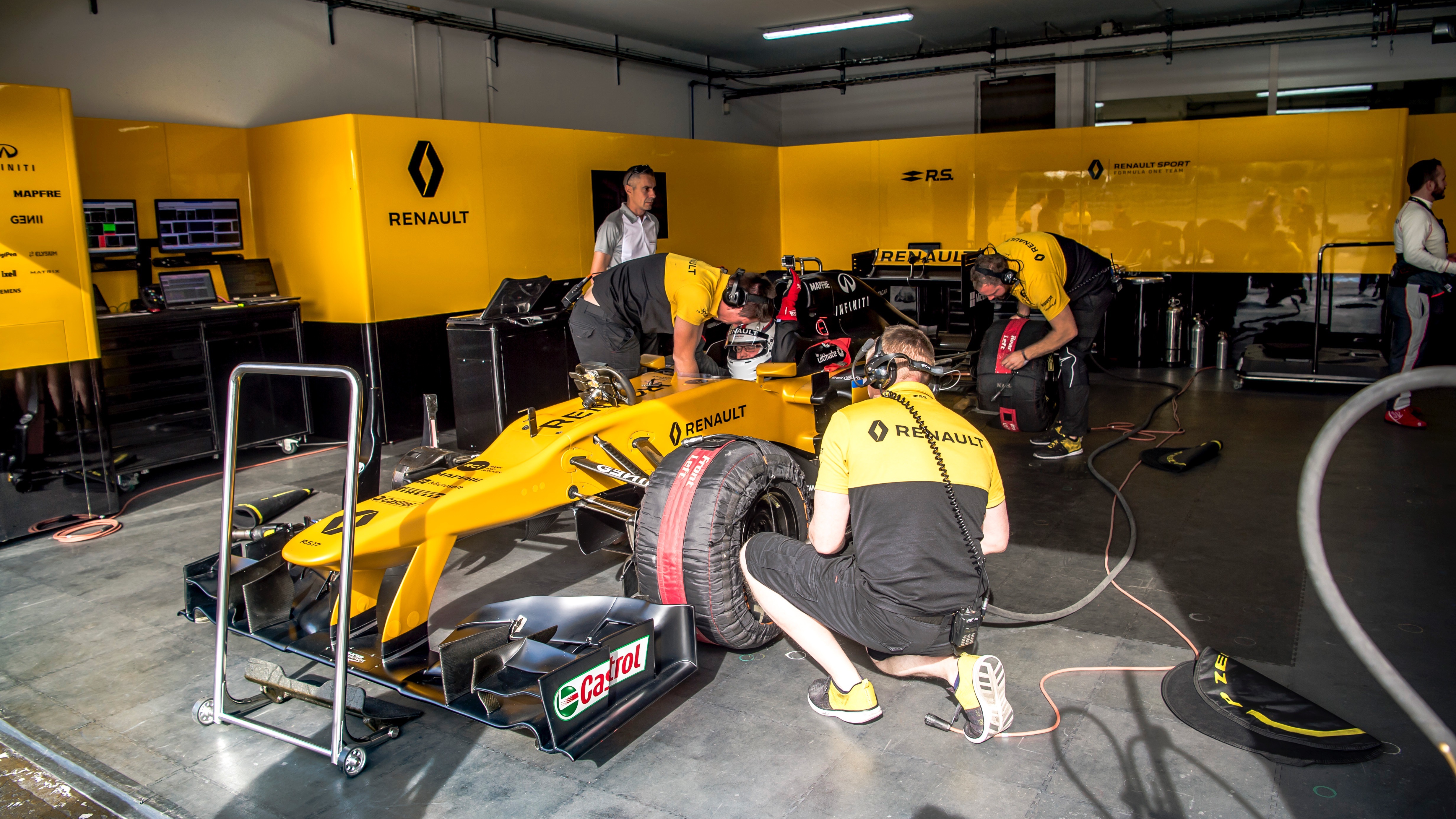
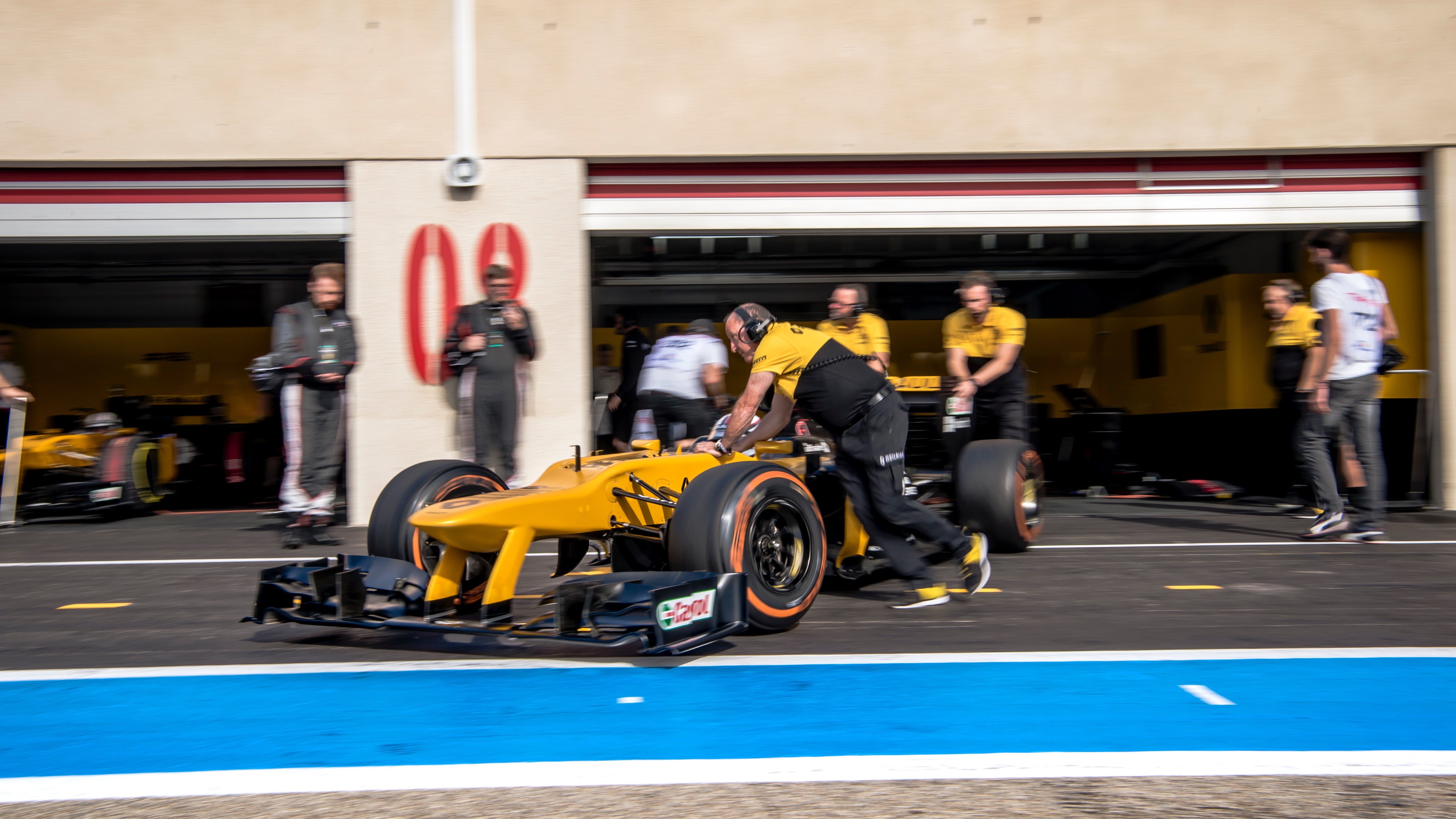
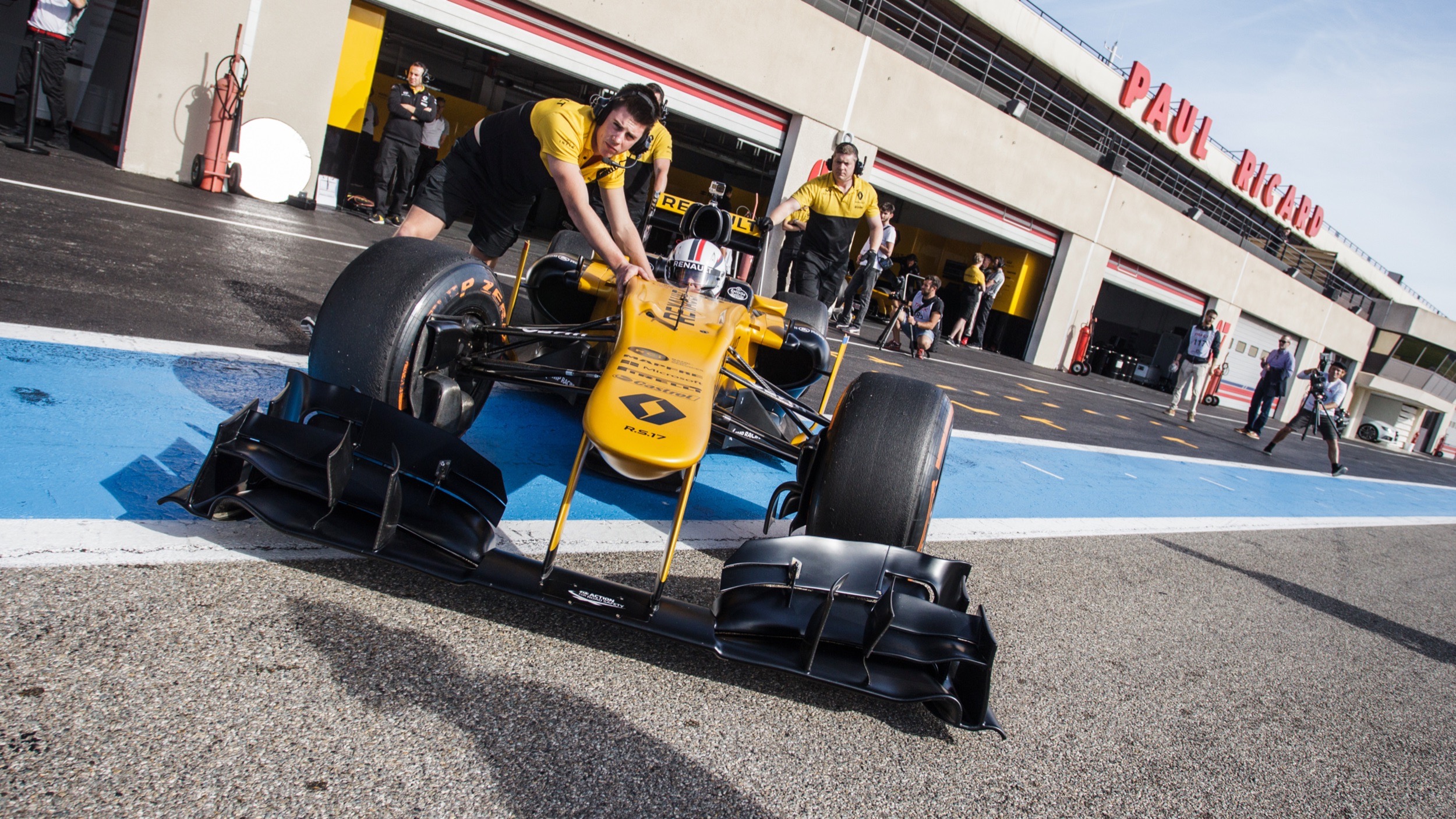
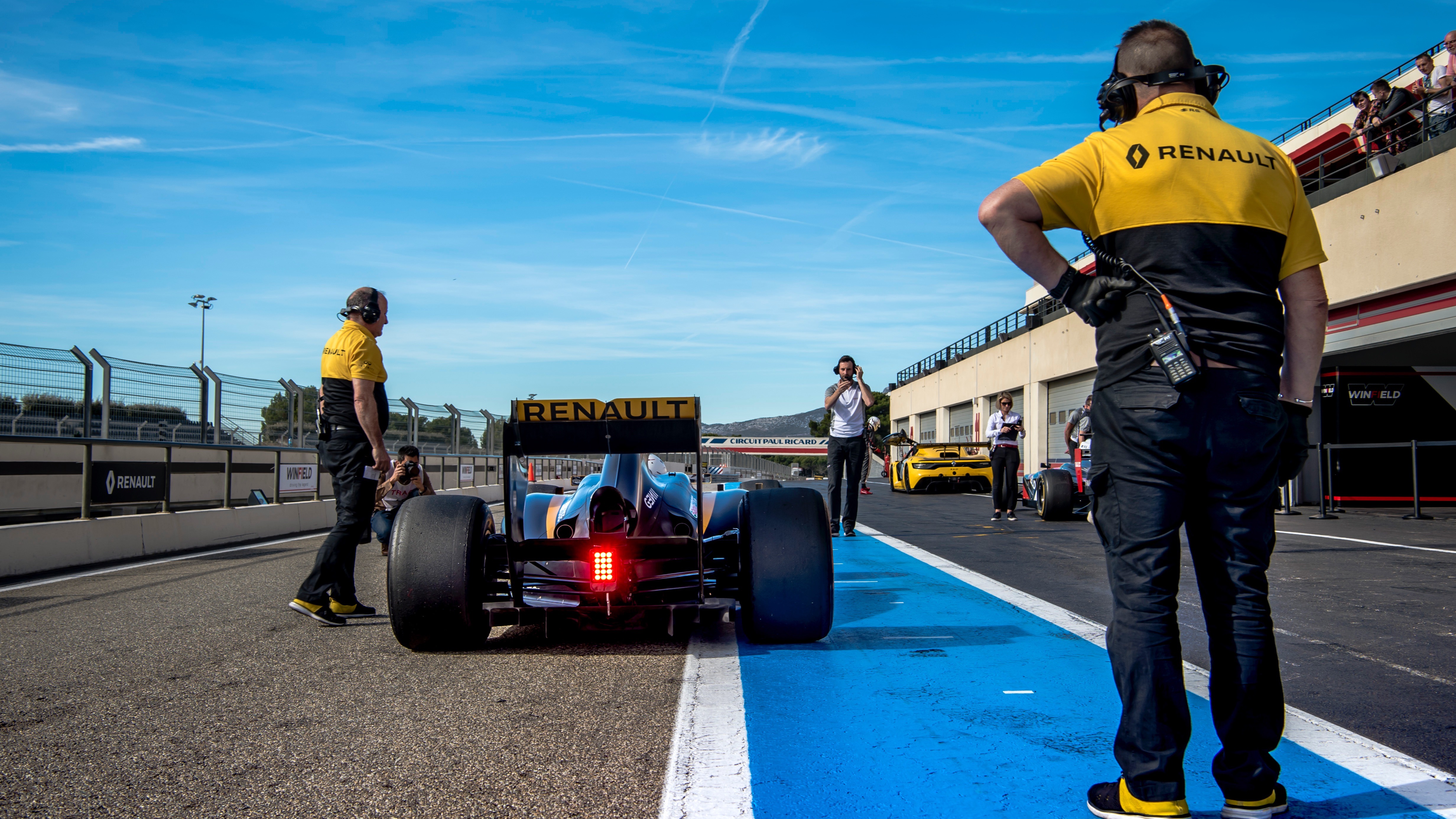
Straight after the briefing I was told that I would be one of the first two in the F1 car. A very exciting moment indeed, but I was glad that I was to be one of the first, primarily because I didn’t enjoy waiting around getting more nervous about how well it would go.
To be honest, after all the talk about the clutch I was more concerned about messing that up. I really didn’t want to stall the car in the pit lane (which someone did, while someone else misjudged the first corner and the circuit’s lorry had to be deployed to collect the car).
I stepped into the car and was then strapped in so tightly that I thought it would be hard to breathe. I was so low down! It seemed even lower than during the seat fitting.
Then came the familiar noise from so many Sunday afternoons watching F1 – the wheel guns crashing into life as the tyres went on. The car rocked from side to side as they went on. Coincidentally, these retired cars come with their own crew and two articulated lorries.
The crew are a mixture of people that have retired from going around the world with the main F1 team and a few youngsters hoping to make the grade and step up to going on race weekends on a regular basis.
Then I was ready. But the crew stood off the car and waited. I then realised that the other car was due to go out first! This added to the nerves a bit; I’d expected to get going but then somebody else was on their way first. I had to wait for them to start off in the pit lane, get up to speed, do three laps and come back in.
As I type this, I can remember those moments vividly, because there I was, sat in a Formula 1 car, hands on the wheel just waiting. A surreal moment.

A few minutes later – it seemed like ages – the other car trundled into the pit lane. They put ‘dolly wheels’ under that car to roll it back into the garage. Then the attention turned to me.
The team of mechanics rolled me out into the pit lane, again on dolly wheels, and then turned me to face the end of the pit lane. A bunch of people were milling around, watching whether I’d be able to make the thing go forward.

Under the instruction of the race engineer, who was also standing in the pit lane speaking to me over the intercom, I was told to select first gear. But it didn’t select, so one of the mechanics selected it for me (he didn’t do anything different than I did, so I don’t know what was going on there). Then the engineer told me to let the clutch out – again warning me to do it very slowly.
As I did so the car moved forward and I accelerated, but not as much as I needed to. I realised that if I didn’t accelerate more, it would stall, so I upped the revs. Then I was away, I trundled down the pit lane at a reasonable speed and headed out towards the first corner , which is very tight. I decided to take that one relatively slowly and then sort myself out once I'd got a bit more used to how the car handled.
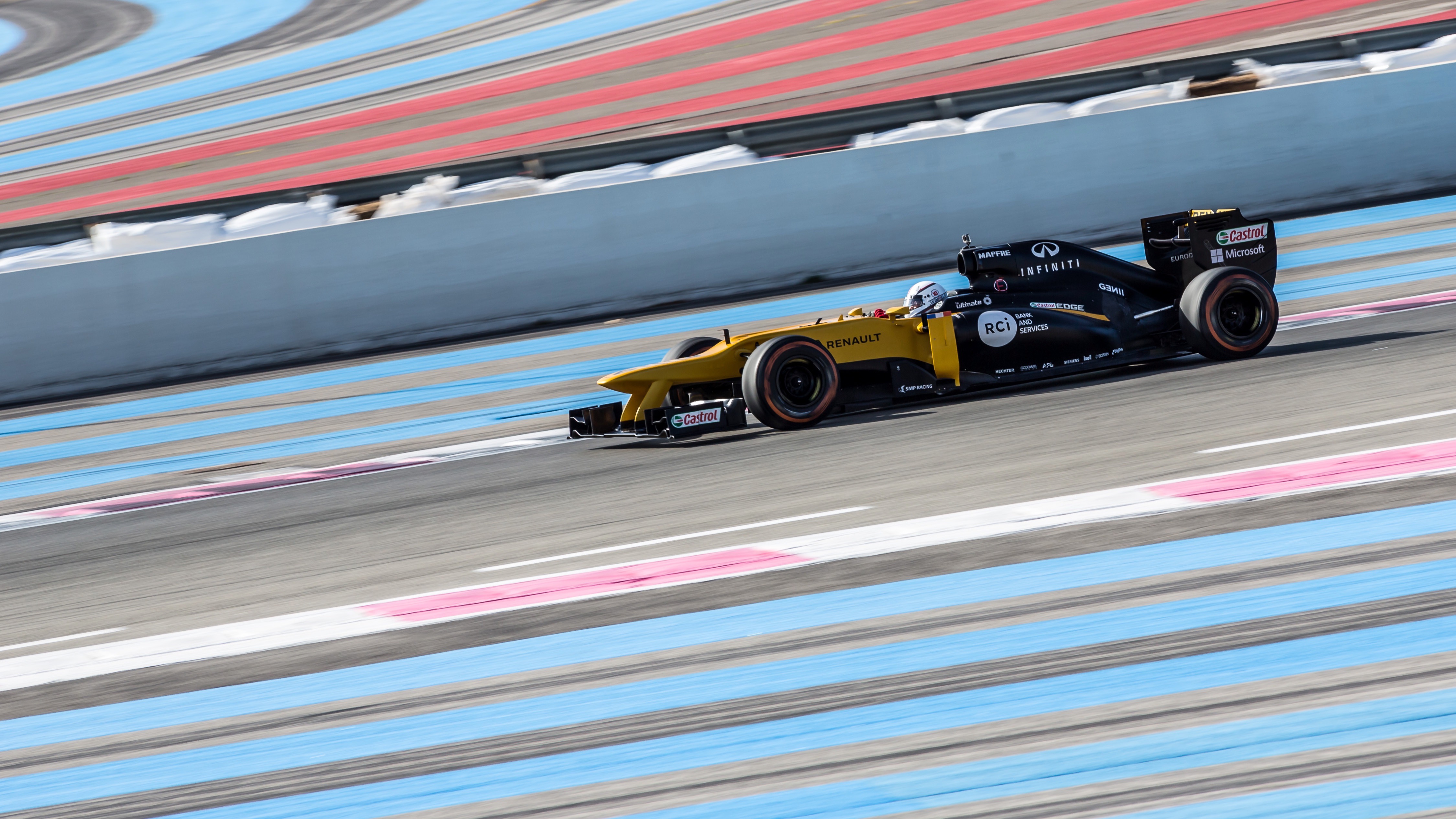
Then I was able to set off on my three laps proper – getting used to the car gradually. I felt almost immediately more comfortable than in the FR 2.0 car in the morning. Because it was a smoother experience - especially in terms of the gear change - it was actually a lot easier to drive.
Before the end of my session the engineer spoke to me just once more to remind me to change gear more regularly – as I mentioned the end of the circuit is a twisty section and I wasn’t changing up and down as much as I should have there.
By the second lap I felt a lot more comfortable and I was able to give it more beans on both straights in my final lap, although I felt my cautious side creep in and slow down well before the tight corner at the end of the pit straight. I wanted to keep driving, but I knew that it was time and as I was thinking about turning into the start of the pit lane, the engineer confirmed that.

So how did I get on? Pretty well actually! It was a superb day (which also included a Renault Sport RS01 passenger ride) and I truly felt that even if I had – say – driven 10 laps instead of 3 that I would have been able to be a lot faster as my confidence grew.
Given others’ difficulties in driving the F1 car, I was extremely pleased that my session had passed without incident.
As we returned to the Winfield base at the other side of the circuit I felt quite elated and somewhat relieved, too. After changing, we celebrated with a glass of champagne and were presented with our telemetry data, a certificate and a wooden model of the track, which looks pretty good on the bookcase. A unique experience for sure.
Find out more about Renault Sport F1 experiences at the Winfield Driving School. Prices to drive the F1 car start at £8,500 plus VAT.
If that's a bit steep, what about checking out other great driving experiences at Red Letter Days or Everyman Racing?
Liked this? Why not check out How to get a pro-grade Formula 1 sim in your spare room
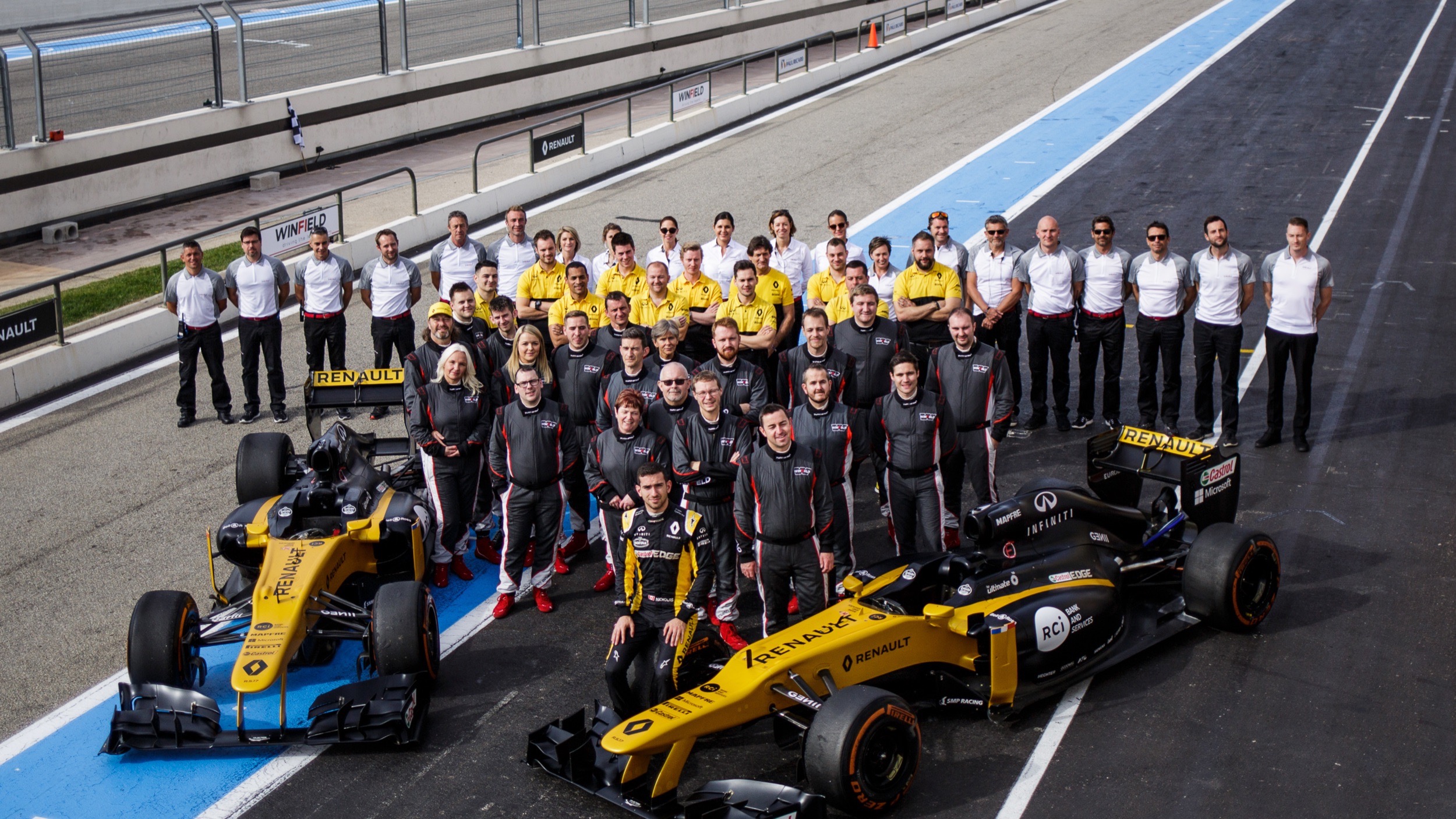

Dan is a previous Editor for T3.com and covered the latest in computing, home entertainment and mobile tech. He's also the former Deputy Editor of TechRadar and former Editor of Lifehacker UK. Dan has written for numerous computing and lifestyle magazines and has also written a book, too. You'll see him pop up in numerous places, having been quoted in or on The Sun, BBC World Service, BBC News Online, ITN News, BBC Radio 5Live, BBC Radio 4 and Sky News Radio.